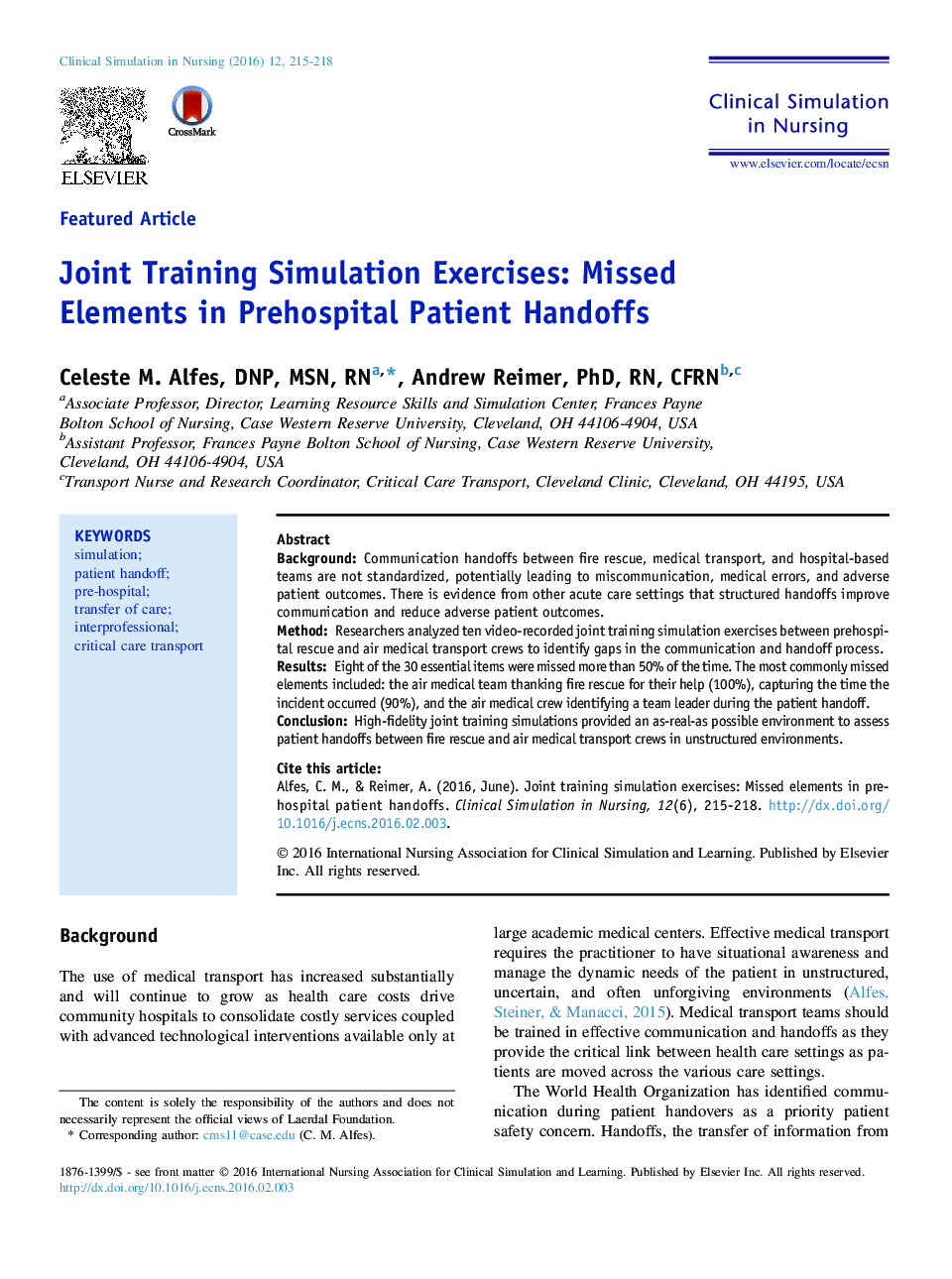| Article ID | Journal | Published Year | Pages | File Type |
|---|---|---|---|---|
| 2646904 | Clinical Simulation in Nursing | 2016 | 4 Pages |
•Medical transport teams must be trained in effective communication and handoffs as they provide the critical link between health care settings as patients are moved across the various care settings.•This pilot study identified that 8 of the 30 items considered essential for supporting good patient handoffs are missed routinely.•Developing a core set of information that must be communicated during every handoff, regardless of clinical situation or setting, will facilitate simulation platforms for joint training exercises to improve communication skills and team performance.
BackgroundCommunication handoffs between fire rescue, medical transport, and hospital-based teams are not standardized, potentially leading to miscommunication, medical errors, and adverse patient outcomes. There is evidence from other acute care settings that structured handoffs improve communication and reduce adverse patient outcomes.MethodResearchers analyzed ten video-recorded joint training simulation exercises between prehospital rescue and air medical transport crews to identify gaps in the communication and handoff process.ResultsEight of the 30 essential items were missed more than 50% of the time. The most commonly missed elements included: the air medical team thanking fire rescue for their help (100%), capturing the time the incident occurred (90%), and the air medical crew identifying a team leader during the patient handoff.ConclusionHigh-fidelity joint training simulations provided an as-real-as possible environment to assess patient handoffs between fire rescue and air medical transport crews in unstructured environments.
